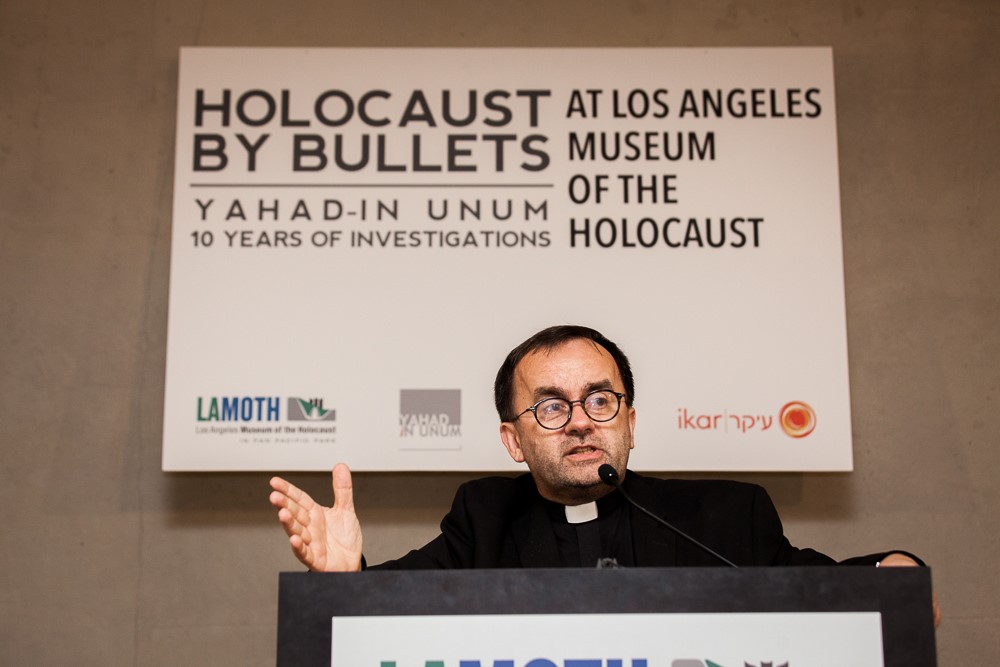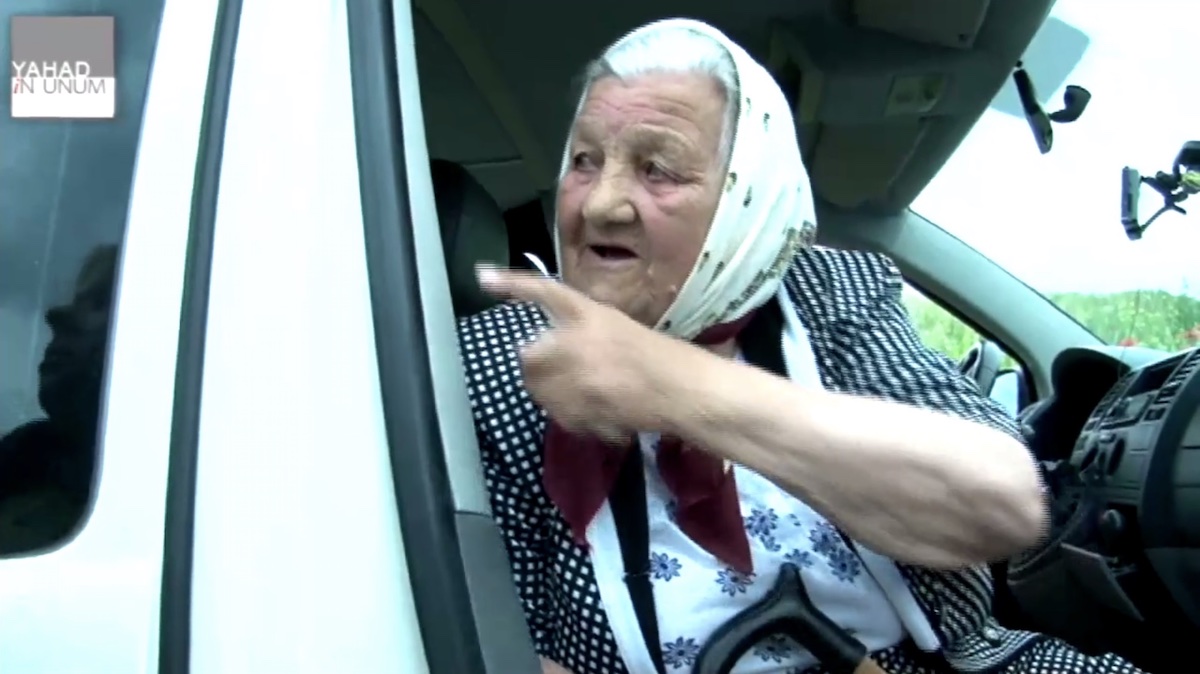Our Mission
By learning from the past and educating the present, we work to prevent genocide and mass killins in the future. Our organization seeks to unsilence a chapter of history that has remained silent for far too long.
Overview
By learning from the past and educating in the present, we work to prevent genocide and mass killings in the future. Yahad-In Unum combines the Hebrew word - Yahad, meaning "together," with the Latin phrase In Unum, meaning "in one". Our organization seeks to unsilence a chapter of history that has remained silent for far too long. In the former Soviet Union, we seek out eyewitnesses to the executions of Jews and Roma as we work towards identifying each execution site and mass grave. The surviving witnesses are in their 80's and 90's, and their first-person accounts of history will soon no longer be available. The window of opportunity to collect the evidence is rapidly closing. Without eyewitness testimony, it will be impossible to identify the location of the mass graves and collect the evidence of the genocide.

The goal
Yahad - In Unum works toward its mission in three different ways:
1. Investigate
Yahad In Unum identifies mass Jewish killing sites & collects forensic evidence of the executions. Our tean videotapes witnesses' testimonies to these killings
To this day, Yahad has effectuated research concernin over 3000 execution sites and has gathered over 7000 testimonies during the course of research trips across countries since 2004 (Ukraine, Belarus, Russia, Polan Romania, Moldova, Latvia, Slovakia, Estonia, Lithuania and the Former Yugoslav Republic of Macedonia).


2. Educate
Teaching about the "Holocaust by bullets" using our unique database of recorded witness testimonies has become a key mission of Yahad In Unum moving forward, and the association's focus on this part of our work is growing year on year.
Yahad In Unum's educational programs have been developed not only for university students in both Europe and the USA (Father Desbois is professor at Georgetown University in Washington D.C.), but also for educators around the world (Europe, USA and Latin America). Yahad trains more than 500 teachers a year on how to teach the history of the Holocaust by Bullets to new generations.
All of Yahad's educational initiatives focus on using the legacy of the Holocaust By Bullets to raise awareness on contemporary mass crimes and genocides and to fight back against the egregious rise of anti-Semitism and Holocaust denial that has become particularly dangerous online.
3. Engage
The "Holocaust by Bullets" was a model for the mass violence that continues to be so prevalent in the world today.
Yahad In Unum's educational programs have been developed not only for university students in both Europe and the USA (Father Desbois is professor at Georgetown University in Washington D.C.), but also for educators around the world (Europe, USA and Latin America). Yahad trains more than 500 teachers a year on how to teach the history of the Holocaust by Bullets to new generations.
Our work serves to influence all societies to examine the darker recesses of history and to speak out against today's global disease of genocide.

Our Mission
Yahad's research on the ground is centered on finding a particular category of actor in the framework of the mass shootings of Jews and Roma during the Second World War in Eastern. Europe, that of the witness. The two principal actors of historical importance are the victims and the perpetrators.
Contrary to the industrial killings in the extermination camps, where the crime was hidden from view, the mass shootings were witnessed by local people, especially the neighbors of the victims.
Never before interviewed, these witnesses are crucial to our research, as they provide a unique insight into a crime which very few survived. Thus, the witnesses have become essential sources of the local crimes.
Their story enables us to reconstruct the events of the crime, which we then corroborate and verify with other sources. such as Soviet and German archival information.
Through our field research, we have identified four main categories of witnesses:
1. The Neighbors
Those who lived in close proximity to the were likely to see or hear the shooting by chance.
Though sometimes warned by the local police or German perpetrators to remain indoors on the day of the shooting, this did not completely inhibit neighbors, especially children at the time, from seeing parts or full scenes of the shooting from their backyard, while taking animals out to graze or following a column of Jews in the center of their village.

2. The Curious
The large majority of witnesses that Yahad encounters and interviews are those who viewed a mass shooting through a combination of chance and curiosity.
Neighbors who saw a column of Jews passing by or children who heard that an event would take place near the village were such witnesses, who sought out the shooting site to see what would happen out of interest.
Their presence at the shooting site didn't bother the killers, as long there was no interference in the killing process.
3. The Forced
Occasionally, locals were forced by the Germans and their collaborators to become witnesses of the mass shootings of Jews. There are a few cases in which German perpetrators forced entire villages to go to the execution site and watch the mass shooting.
Though an explicit reason for forcing locals to attend mass shootings was never given, it is most likely that this form of public execution was intended to frighten the local population into submission.
They witnessed the consequences that awaited them if they were caught harboring or aiding Jews.

4. The Requisitioned
The final category of witness applies to all those who were forced to participate in some logistical aspect of the shooting, either by the local police or German perpetrators. Locals were requisitioned to transport Jews to the shooting site in their carts, to dig the mass graves, to sort the clothes of the Jews, to fill the mass graves, to cook for the Germans and much more. Those requisitioned were either explicitly threatened with a punish if they failed to participate or felt the pressure to act, while others took part in aspects of the mass shooting willingly.
